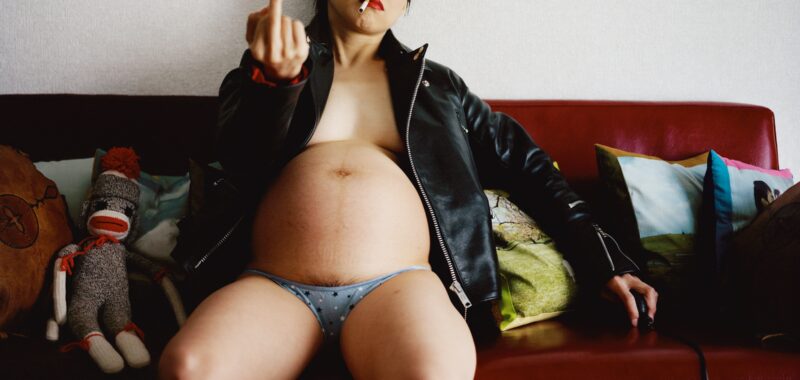Published in the late 1990s, a purportedly definitive history of photography in Japan featured zero women across its 40 volumes. In the first 25 years of its existence, the country’s prestigious Kimura Ihei Photography Award was granted to only three women. And Pennsylvania’s Lehigh University Art Gallery staged a 1989 exhibition dedicated to Japanese women photographers — one of the first of its kind — after being forced to cancel a show that originally included men, all of whom pulled out upon learning that women’s work would be displayed alongside theirs. In such an environment, as the scholar Mariko Takeuchi writes, women artists “stubbornly forged their own paths alone.”
Mariko’s meditation on dissident women is at the center of I’m So Happy You Are Here: Japanese Women Photographers from the 1950s to Now, which references these three historical examples, though is by no means limited to them, as it provides vital answers to long-standing gaps and elisions. Edited by Brooklyn Museum Curator of Photography Pauline Vermare and Printed Matter Executive Director Lesley A. Martin, the book contains lavish reproductions of the work of more than 60 Japanese women photographers along with over a dozen essays and interviews by scholars, curators, and artists, some of which are published in English for the first time. This expansive publication accompanies a traveling exhibition of the same name and is an essential resource for any reader who wants to understand photography in Japan, its practitioners, and their contexts.
Despite their persistent erasure, Japanese women have been involved in photography since its arrival in the country in the late 1850s. Curator Noriko Fuku’s reprinted 1998 essay for the catalog of An Incomplete History traces this neglected legacy from the groundbreaking 19th-century studio photographer Ryū Shima to the first women photojournalists in 1940s Japan. Though the book focuses on artists working from the mid-20th century onward, this and other texts that excavate the practices of earlier photographers tell a fuller story about later artists’ production.

Another highlight is historian Kelly Midori McCormick’s previously unpublished 2017 interview with revolutionary photographer Tokiwa Toyoko (1930–2019), whose 1957 photobook Kiken na adabana (“Dangerous Poison Flowers”) unflinchingly chronicles the hardscrabble lives of sex workers and other working women in post-war Yokohama. At a time of great resistance, Tokiwa carved a path for herself with astounding determination. Photography, she tells McCormick, “means doing something that no one else is doing.”
The book seems to prove Tokiwa’s point. It showcases a staggering variety of approaches to the medium, through both extensive artist portfolios and photobook excerpts. Street shots, multimedia collages, experimental photograms, elaborately constructed still lifes, and other works collectively present an alternative history of politics and sexuality in Japan, as in Watanabe Hitomi’s snapshots of student protests in late-1960s Tokyo and Ishikawa Mao’s portraits of sex workers and soldiers in American-occupied Okinawa.
On a more intimate scale, Ushioda Tokuko’s tender black-and-white scenes of daily domestic life and motherhood from the 1970s and ’80s contrast sharply with Sawada Tomoko’s tongue-in-cheek critiques of female beauty standards from the early 2000s and Okabe Momo’s recent saturated portraits of trans identity.
Through their multifaceted work, these artists both documented and shaped important changes for women in Japan. Still, this year, Japan was ranked 118th of 146 countries in the Global Gender Gap Report. This book celebrates the gains, while keeping us alert to the hard work behind them.





I’m So Happy You Are Here: Japanese Women Photographers from the 1950s to Now (2024), edited by Pauline Vermare and Lesley A. Martin, is published by Aperture and is available online and through independent booksellers.

